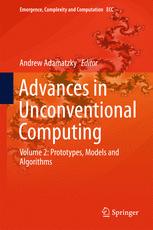

Most ebook files are in PDF format, so you can easily read them using various software such as Foxit Reader or directly on the Google Chrome browser.
Some ebook files are released by publishers in other formats such as .awz, .mobi, .epub, .fb2, etc. You may need to install specific software to read these formats on mobile/PC, such as Calibre.
Please read the tutorial at this link: https://ebookbell.com/faq
We offer FREE conversion to the popular formats you request; however, this may take some time. Therefore, right after payment, please email us, and we will try to provide the service as quickly as possible.
For some exceptional file formats or broken links (if any), please refrain from opening any disputes. Instead, email us first, and we will try to assist within a maximum of 6 hours.
EbookBell Team

0.0
0 reviewsThe unconventional computing is a niche for interdisciplinary science, cross-bred of computer science, physics, mathematics, chemistry, electronic engineering, biology, material science and nanotechnology. The aims of this book are to uncover and exploit principles and mechanisms of information processing in and functional properties of physical, chemical and living systems to develop efficient algorithms, design optimal architectures and manufacture working prototypes of future and emergent computing devices.
This second volume presents experimental laboratory prototypes and applied computing implementations. Emergent molecular computing is presented by enzymatic logical gates and circuits, and DNA nano-devices. Reaction-diffusion chemical computing is exemplified by logical circuits in Belousov-Zhabotinsky medium and geometrical computation in precipitating chemical reactions. Logical circuits realised with solitons and impulses in polymer chains show advances in collision-based computing. Photo-chemical and memristive devices give us a glimpse on hot topics of a novel hardware. Practical computing is represented by algorithms of collective and immune-computing and nature-inspired optimisation. Living computing devices are implemented in real and simulated cells, regenerating organisms, plant roots and slime mould.